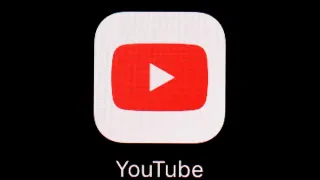
Jul 29
Gay Times Raises Over £150,000 from Community Investors Amid Advertiser Backlash and Industry Shifts
READ TIME: 3 MIN.
Gay Times, one of the world’s longest-running queer publications, has raised £152,322 from 363 supporters who bought shares and became co-owners of the publication in a major community investment initiative that concluded in mid-July 2025 . This shift comes after months of advertiser backlash related to the magazine’s commitment to covering LGBTQIA+ diversity, as well as broader industry challenges fueled by changes in digital traffic patterns.
The fundraising effort reflects both ongoing trust in the publication’s mission and a growing desire among LGBTQIA+ communities to directly support independent queer media outlets .
Gay Times has faced a decline in advertising revenue, in part due to advertisers expressing hesitancy about “grittier” content that centers trans, non-binary, and intersectional queer experiences . This trend is not unique to Gay Times, but reflects wider struggles in the LGBTQ+ media sector, where the pursuit of authentic storytelling can sometimes lead to friction with more conservative commercial partners .
The publisher has also noted a sharp reduction in referral traffic from search engines, attributed to the rise of AI-driven “zero-click” search results that present answers directly on search platforms, reducing readers’ need to visit publishers’ websites. This has further exacerbated financial pressures that many digital outlets, especially those serving marginalized audiences, are experiencing .
In response, Gay Times has made a strategic shift: scaling up its subscription site (magazine.gaytimes.com), which retains a print-style aesthetic and a focus on in-depth, original journalism . While the magazine’s print edition ceased publication several years ago, the digital subscription product has maintained a loyal readership and will now increase its content cadence from monthly to daily.
This move is accompanied by a new editorial commitment to “grittier” and more challenging stories, unbound by the constraints of advertiser preferences. According to Gay Times CEO Tag Warner, this community-backed model will allow the publication to pursue bold reporting and elevate underrepresented narratives within LGBTQIA+ communities . “Focusing on the subscription product will help the brand be resilient as a destination brand,” Warner explained, noting that the shift to community investment also insulates Gay Times from some of the unpredictability of the digital ad market.
Beyond publishing, Gay Times has expanded its business model by developing Wax Talent, a talent agency launched in May 2024 representing LGBTQ+ creatives such as fashion designer Daniel Fletcher, drag queen Courtney Act, and footballer Josh Cavallo . This agency works directly with brands on creative campaigns and has remained more stable than the advertising side of the magazine itself, providing a crucial secondary revenue stream.
Warner noted that this separation—keeping creative brand partnerships within the talent agency—makes Gay Times’ editorial side “a bit more gritty,” while Wax Talent is “more approachable for brands,” ultimately providing more flexibility and sustainability for the overall business .
The successful community investment round is being hailed as a positive example of how LGBTQ+ media can adapt to rapidly changing economic and technological environments. For many supporters, becoming shareholders is not only a financial move but a statement of solidarity with queer journalism and a way to safeguard spaces for authentic LGBTQIA+ storytelling .
Industry analysts suggest that this model—blending reader support, diversified revenue streams, and editorial independence—could serve as a blueprint for other LGBTQ+ media organizations facing similar pressures . As queer publications continue to navigate advertiser demands and the shifting digital landscape, the Gay Times example underscores the power of community-driven media to sustain and amplify marginalized voices.






